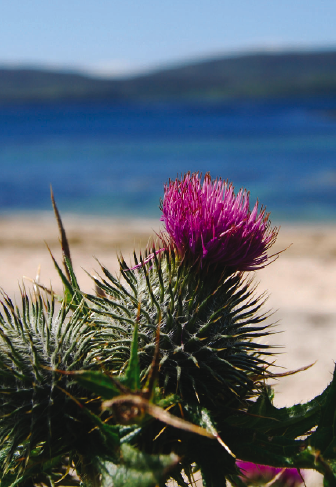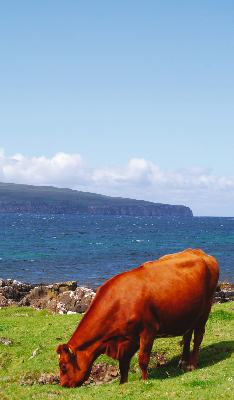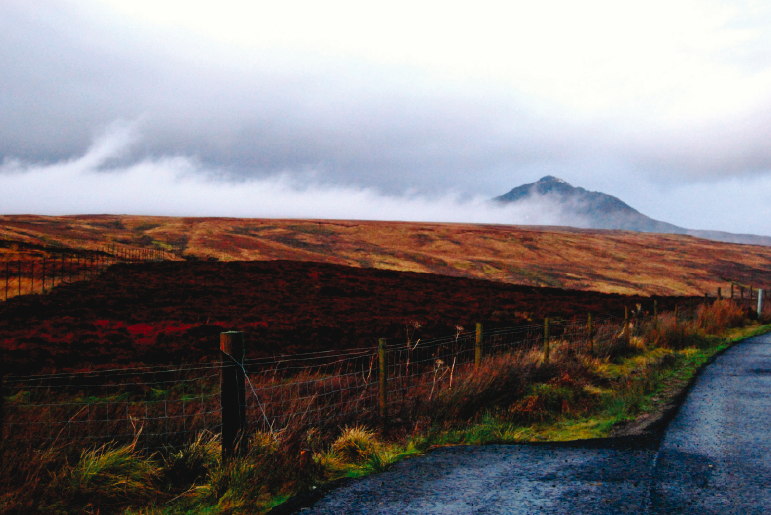 Mountain views to rival the Alps, turquoise sea that can match the Mediterranean and fresh air that can clean out those cobwebs and make you feel brand spanking new again. Catriona Matheson invites you to explore Scotland’s stunning west coast.
Mountain views to rival the Alps, turquoise sea that can match the Mediterranean and fresh air that can clean out those cobwebs and make you feel brand spanking new again. Catriona Matheson invites you to explore Scotland’s stunning west coast.
It can be hard to imagine that not too far away from the library’s fluorescent lights lies some of the world’s most beautiful and untouched scenery. Often described as Western Europe’s last natural wilderness, Scotland’s highlands and islands are home to staggering mountain peaks, deep glens, expansive moors and beautiful woodlands, not to mention wildlife including golden eagles, deer and dolphins. Whether you fancy an overnight jaunt to take time off from revision, a celebratory trip after your exams or a summer holiday that will allow you to see the country at its best, Scotland’s west coast has plenty to offer the student traveller. So next time you’re thinking of booking a flight, take a look at what’s on your doorstep. From the southerly Isle of Arran to the Western Isles and everything in between, prepare to be wowed.
 There is something very appealing about holidaying on a Scottish island. Perhaps it is the sense of adventure from crossing water and the romance of being somewhere so remote. Luckily however, you don’t have to travel too far for the experience as the Isle of Arran is easily accessible from Glasgow and so makes the perfect destination for a short break. Sitting in the Firth of Clyde between Ayrshire and Kintyre, Arran is just a two-hour journey from central Glasgow, including the hour ferry ride from mainland Ardrossan to Brodick, Arran’s main port. It may only be 19 miles long by 10 miles wide however Arran is home to a remarkable diversity of landscapes, best experienced by pulling on the hiking boots or cycling its circular road. With rolling hills and sandy bays in the south and granite mountain-tops in the north, it is easy to see why Arran is often dubbed ‘Scotland in Miniature.’ Indeed, the locals will tell you that Arran has the best of what the rest of Scotland has on offer; golf courses, ancient castles, outdoor sports, top restaurants and a distillery. Music lovers should take note that Arran’s pubs also come alive with the sounds of session music during the summer months.
There is something very appealing about holidaying on a Scottish island. Perhaps it is the sense of adventure from crossing water and the romance of being somewhere so remote. Luckily however, you don’t have to travel too far for the experience as the Isle of Arran is easily accessible from Glasgow and so makes the perfect destination for a short break. Sitting in the Firth of Clyde between Ayrshire and Kintyre, Arran is just a two-hour journey from central Glasgow, including the hour ferry ride from mainland Ardrossan to Brodick, Arran’s main port. It may only be 19 miles long by 10 miles wide however Arran is home to a remarkable diversity of landscapes, best experienced by pulling on the hiking boots or cycling its circular road. With rolling hills and sandy bays in the south and granite mountain-tops in the north, it is easy to see why Arran is often dubbed ‘Scotland in Miniature.’ Indeed, the locals will tell you that Arran has the best of what the rest of Scotland has on offer; golf courses, ancient castles, outdoor sports, top restaurants and a distillery. Music lovers should take note that Arran’s pubs also come alive with the sounds of session music during the summer months.
If, however, you need more than a short break to wet your travel taste buds, then you should head north-west out of Glasgow, and keep on going. If you haven’t already been, then a good first port of call is Loch Lomond and The Trossachs National Park. You can catch a train from Glasgow to Balloch which sits on the banks of Loch Lomond. From there, you can explore the surrounding area and, for £6.50 you can take a boat trip out onto the Loch. I’ve heard that on a sunny day it’s magnificent. If like on my recent trip there, you get battered and soaked by the wind and rain, then afterwards you can seek salvation in the loch-side Balloch House Hotel. Tastefully decorated and quaintly Scottish, the hotel offers an all-day menu and comfy sofas by a log fire.
From Balloch, you can catch a bus to the coastal town of Oban which is the largest port on Scotland’s west coast. Oban is popular with tourists largely due to its local sites (castles and an impressive amphitheatre), excellent just-off-the-boat seafood (think fresh oysters, scallops and crab) and its ferry links to nearby islands. Caledonian MacBrayne runs ferries from Oban to the Isles of Mull, Barra, Colonsay, Tiree and South Uist so you have several options for travelling further afield.
 Staying on the mainland, onwards from Oban you can travel (preferably by a car, but there is a bus service) through the jaw-droppingly spectacular Glencoe, one of Scotland’s most historic and scenic glens. As you drive through the glen, the sheer scale and grandeur of its surrounding mountains will not fail to impress. I’ve driven through Glencoe in glorious sunshine as well as in torrential rain and on both occasions the views did not disappoint. When the sun shines on Glencoe, it bounces off the rocky crags; on a grey day, the weather only adds to the mystical atmosphere of the area which is rumored to be haunted due to the infamous 1692 Massacre of Glencoe involving the Campbell and MacDonald clans. If it seems familiar, then it may be due to its more recent claim to fame; the setting for part of the Harry Potter film ‘Harry Potter and the Prisoner of Azkaban.’
Staying on the mainland, onwards from Oban you can travel (preferably by a car, but there is a bus service) through the jaw-droppingly spectacular Glencoe, one of Scotland’s most historic and scenic glens. As you drive through the glen, the sheer scale and grandeur of its surrounding mountains will not fail to impress. I’ve driven through Glencoe in glorious sunshine as well as in torrential rain and on both occasions the views did not disappoint. When the sun shines on Glencoe, it bounces off the rocky crags; on a grey day, the weather only adds to the mystical atmosphere of the area which is rumored to be haunted due to the infamous 1692 Massacre of Glencoe involving the Campbell and MacDonald clans. If it seems familiar, then it may be due to its more recent claim to fame; the setting for part of the Harry Potter film ‘Harry Potter and the Prisoner of Azkaban.’
North of Oban lies Fort William, home to the mighty Ben Nevis which at 1344 meters is Britain’s highest peak. The mountain attracts many who would not normally attempt such a climb (myself included) with a staggering 100,000 people reaching the summit every year. Although anyone who is reasonably fit should be capable of the climb, the ascent should not be undertaken lightly. The weather can be temperamental (I experienced snow in June) and every year several people have to be rescued from the mountain so do your research first and make sure you’re well equipped. The climb is a challenge and your legs will probably be aching for days when you get back to level ground, however the rewards are certainly worth it. If you’re lucky with the weather then the views are spectacular, and your pint at the Ben Nevis Inn following your descent will be the best you have ever tasted.
From Fort William, you have several options for travelling north including Ullapool, Cape Wrath, Sandwood Bay or eastwards to Loch Ness. However I would highly recommend making your way to Kyle of Lochalsh from where you can cross the bridge to the Isle of Skye.
I may be biased about Skye as I’ve been visiting for years and have some wonderful memories, however the island is truly one of Scotland’s finest. Skye boasts an intriguing history; as the song goes, Bonnie Prince Charlie fled to the Isle to escape capture. Portree, Skye’s capital is picturesque with a delightful, cottage-lined harbour. However, it is the backdrop of dramatic scenery that keeps tourists returning year after year. The Isle of Skye is a Mecca for hill walkers and rock climbers but every visitor will be in awe of its views. Come prepared for all weather; Skye is known as the ‘Misty Isle’. However when the sun is out, it is glorious. The surrounding sea turns turquoise and sparkles in the sunlight, and the deserted, white sandy beaches will make you very glad you didn’t book that flight.

